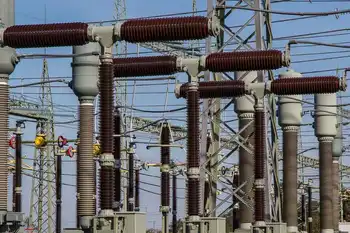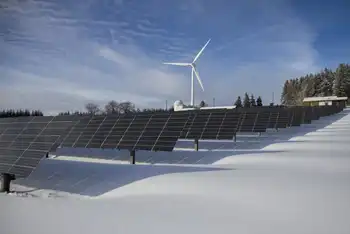Province misses point of renewable energy
TORONTO, ONTARIO - At Queen's Park, they still don't get it: Big is not beautiful in supplying electricity.
Big means long transmission lines, which lose 8 per cent of their energy in transporting electrical current — representing almost 2,000 megawatts of peak generating capacity, enough to power about a million of Ontario's average homes. Big also means centralized power sources, especially nuclear plants that are costly to build, nightmarishly expensive to maintain, and become a curse when they break down by reducing electricity supplies.
Most importantly, big shifts the focus away from displacing electricity consumption.
All of this is evident in recommendations from the Ontario Power Authority to the minister of energy on what should be the electricity supply mix for the province over the next 20 years.
The power authority's report calls for a dozen or more nuclear reactors that would replace or refurbish reactors at a cost of $30 billion to $40 billion. (Ontario's existing generating stations each have four reactors.) And it lays out proposals for generating renewable energy, principally by building wind farms and adding to hydroelectric generation.
However, it ignores geothermal energy, and all but ignores the potential of producing electricity from biomass (plant fibre, manure, organic garbage) and solar energy. This affects how the OPA would balance the system, skewing it toward nuclear power, even to the point of rejecting an additional 2,000 to 4,000 megawatts of wind-power capacity that could be built in areas the authority designated as prime sites for wind turbines.
Biomass, the report says, can contribute only an additional 470 MW of power and solar energy just 40 MW.
These are outlandishly low estimates.
According to a detailed analysis prepared in 2004 by the David Suzuki Foundation, geothermal, biomass and solar energy can supply or displace about 11,000 MW of power generation by 2025. It says geothermal energy alone could displace more than 4,300 MW of electricity if it were used for heating and cooling buildings. (Existing nuclear reactors range from 515 MW to 881 MW. The OPA's recommendations call for 15,000 MW of nuclear capacity by 2025.)
The Suzuki report is at http://www.davidsuzuki.org/publications. Click on climate change reports, and on Smart Generation: Powering Ontario with Renewable Energy.
The OPA report largely dismisses biomass because it says, "growing crops specifically for electricity production is unlikely to be viable" — a statement that is wrong and, at the same time, misses the point.
The point is to use biomass for co-generation — to produce heat and electricity. In other words, to obtain a double bonus by displacing electricity used for such purposes as creating hot water and, at the same time, by generating electricity for use elsewhere.
Roger Samson of REAP-Canada (Resource Efficient Agricultural Production) in Montreal says switchgrass, a native plant that can grow to 2.5 metres, or 8 feet, and thrives anywhere hay can, is a perfect candidate for biomass fuel, once it is turned into pellets or briquettes.
Lest anyone think this is pie in the sky, the Suzuki report notes that biomass provides Finland with 19.4 per cent of its primary energy supply and Sweden with 15 per cent.
There's an old maxim that says, "If you don't change the way you think, everything stays the same." Ontario can't afford to stay the same.
Related News

Ukraine has electricity reserves, no more outages planned if no new strikes
KYIV - - Ukraine plans no more outages to ration electricity if there are no new strikes and has been able to amass some power reserves, the energy minister said on Saturday, after months of interruptions caused by Russian bombings.
"Electricity restrictions will not be introduced, provided there are no strikes by the Russian Federation on infrastructure facilities," Energy Minister Herman Halushchenko said in remarks posted on the ministry's Telegram messaging platform.
"Outages will only be used for repairs."
After multiple battlefield setbacks and scaling down its troop operation to Ukraine's east and south, Russia in October began bombing the country's energy infrastructure,…




